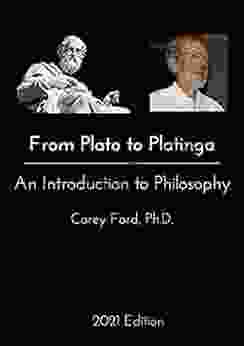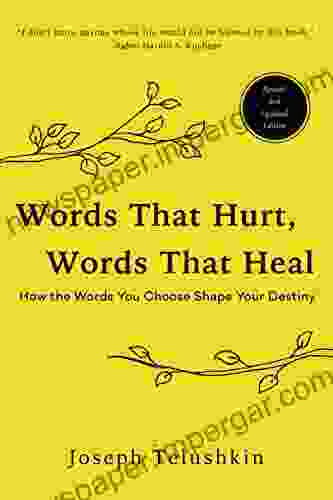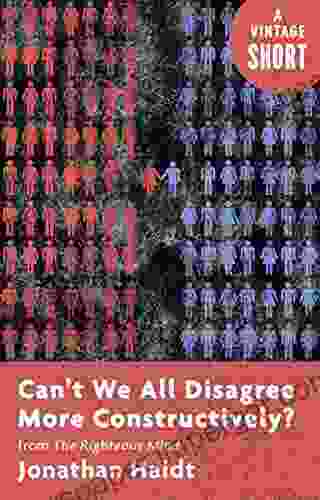Violence: A Comprehensive Guide for Psychiatric Clinics

Violence is a major public health concern that affects individuals, families, and communities around the world. It is a complex issue with multiple causes and risk factors, including mental health disFree Downloads. Psychiatric clinics are often the first point of contact for individuals who are struggling with violence or aggression, and they play a vital role in providing assessment, diagnosis, and treatment.
4.3 out of 5
| Language | : | English |
| File size | : | 2576 KB |
| Text-to-Speech | : | Enabled |
| Screen Reader | : | Supported |
| Enhanced typesetting | : | Enabled |
| Print length | : | 185 pages |
This comprehensive guide provides an in-depth look at the issue of violence, exploring its causes, assessment, diagnosis, and management in clinical settings. The guide is designed to help clinicians better understand and manage violence, and to provide evidence-based recommendations for assessment, diagnosis, and treatment.
Causes of Violence
The causes of violence are complex and multifactorial, and they can vary depending on the individual and the situation. Some of the most common risk factors for violence include:
* Mental health disFree Downloads, such as schizophrenia, bipolar disFree Download, and personality disFree Downloads * Substance abuse * Trauma * Poverty * Lack of education * Unemployment * Social isolation
It is important to note that not all individuals with these risk factors will become violent. However, the presence of these risk factors can increase the likelihood of violence.
Assessment of Violence
The assessment of violence is a complex process that requires a thorough understanding of the individual's history, mental status, and risk factors. The clinician should also be aware of the legal and ethical issues surrounding the assessment of violence.
The assessment should begin with a comprehensive history and mental status examination. The clinician should inquire about the individual's history of violence, including any past arrests or convictions. The clinician should also assess the individual's current mental status, including any symptoms of psychosis, mania, or depression.
In addition to the history and mental status examination, the clinician may also use a variety of risk assessment tools to help assess the individual's risk of violence. These tools can be helpful in identifying individuals who are at high risk of violence, and they can be used to develop a safety plan.
Diagnosis of Violence
The diagnosis of violence is based on the individual's history, mental status, and risk assessment. The clinician should use the Diagnostic and Statistical Manual of Mental DisFree Downloads (DSM-5) criteria to diagnose violence. The DSM-5 criteria for violence include:
* A history of violence or aggression * A current risk of violence or aggression * The presence of a mental health disFree Download that is associated with violence or aggression
Management of Violence
The management of violence is a complex process that requires a multidisciplinary approach. The treatment team should include the individual, the family, the clinician, and other professionals, such as social workers, case managers, and law enforcement officers.
The treatment plan should be tailored to the individual's needs and risk factors. The plan may include a variety of interventions, such as:
* Medication * Psychotherapy * Behavioral therapy * Social skills training * Violence prevention programs
The clinician should also develop a safety plan with the individual. The safety plan should outline the steps that the individual should take if they are feeling violent or aggressive.
Violence is a major public health concern that affects individuals, families, and communities around the world. Psychiatric clinics play a vital role in providing assessment, diagnosis, and treatment for violence. This comprehensive guide provides an in-depth look at the issue of violence, exploring its causes, assessment, diagnosis, and management in clinical settings. The guide is designed to help clinicians better understand and manage violence, and to provide evidence-based recommendations for assessment, diagnosis, and treatment.
4.3 out of 5
| Language | : | English |
| File size | : | 2576 KB |
| Text-to-Speech | : | Enabled |
| Screen Reader | : | Supported |
| Enhanced typesetting | : | Enabled |
| Print length | : | 185 pages |
Do you want to contribute by writing guest posts on this blog?
Please contact us and send us a resume of previous articles that you have written.
 Book
Book Novel
Novel Page
Page Chapter
Chapter Text
Text Story
Story Genre
Genre Reader
Reader Library
Library Paperback
Paperback E-book
E-book Magazine
Magazine Newspaper
Newspaper Paragraph
Paragraph Sentence
Sentence Bookmark
Bookmark Shelf
Shelf Glossary
Glossary Bibliography
Bibliography Foreword
Foreword Preface
Preface Synopsis
Synopsis Annotation
Annotation Footnote
Footnote Manuscript
Manuscript Scroll
Scroll Codex
Codex Tome
Tome Bestseller
Bestseller Classics
Classics Library card
Library card Narrative
Narrative Biography
Biography Autobiography
Autobiography Memoir
Memoir Reference
Reference Encyclopedia
Encyclopedia John Salinsky
John Salinsky John Gunders Ph D
John Gunders Ph D John Mcmanamy
John Mcmanamy John M Steele
John M Steele Jonathan Biddle
Jonathan Biddle John F Steinle
John F Steinle John Lewis Gaddis
John Lewis Gaddis John J Nagelhout
John J Nagelhout John Gibson
John Gibson John Truman Wolfe
John Truman Wolfe John Gittings
John Gittings Jonathan Rapping
Jonathan Rapping Jorge G Castaneda
Jorge G Castaneda John P Cann
John P Cann John Gillingham Cpa
John Gillingham Cpa John G Francis
John G Francis Jonathan Harnisch
Jonathan Harnisch John T Moore
John T Moore John Tosh
John Tosh Jonny Sun
Jonny Sun
Light bulbAdvertise smarter! Our strategic ad space ensures maximum exposure. Reserve your spot today!
 Philip BellFollow ·12.3k
Philip BellFollow ·12.3k Jean BlairFollow ·7.9k
Jean BlairFollow ·7.9k Ronald SimmonsFollow ·18.7k
Ronald SimmonsFollow ·18.7k Duane KellyFollow ·18k
Duane KellyFollow ·18k David Foster WallaceFollow ·5.9k
David Foster WallaceFollow ·5.9k Dylan MitchellFollow ·16.9k
Dylan MitchellFollow ·16.9k Ken FollettFollow ·16.1k
Ken FollettFollow ·16.1k Greg CoxFollow ·3.2k
Greg CoxFollow ·3.2k

 Jake Powell
Jake PowellThe Constitution of the State of Colorado: A Legacy of...
Since its adoption in 1876, the...

 Devin Ross
Devin RossFrom Plato to Plantinga: A Journey Through the History of...
Philosophy is the study of...

 Robin Powell
Robin PowellWords That Hurt, Words That Heal: The Power of Language...
Words are powerful. They can...

 T.S. Eliot
T.S. EliotTantalize Your Taste Buds with Over 90 Low-Carb Ethnic...
Indulge in a Culinary Adventure with "Over...
4.3 out of 5
| Language | : | English |
| File size | : | 2576 KB |
| Text-to-Speech | : | Enabled |
| Screen Reader | : | Supported |
| Enhanced typesetting | : | Enabled |
| Print length | : | 185 pages |
















